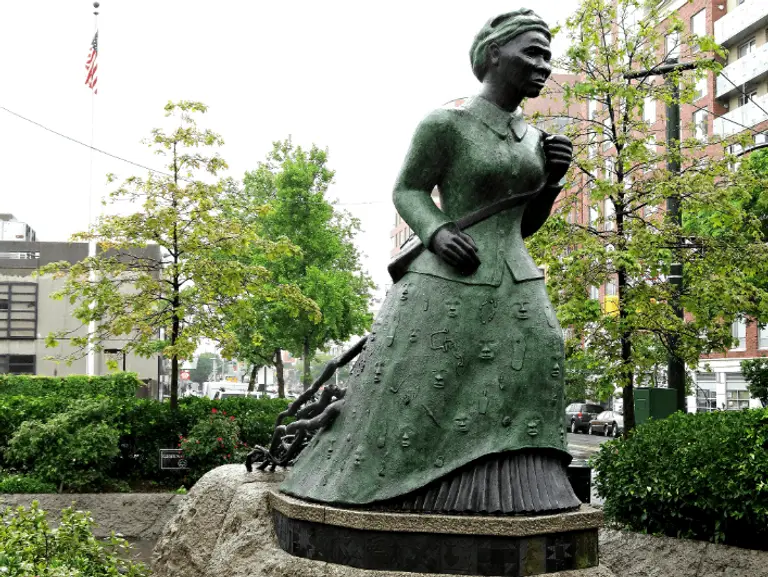February 8, 2019
Harriet Tubman, the fearless abolitionist and conductor of the Underground Railroad who led scores of slaves to freedom in some 13 expeditions, fought for the Union Army during the Civil War, and dedicated herself to Women’s Suffrage later in life, was known as “Moses” in her own time, and is revered in our time as an extraordinary trailblazer. Her status as a groundbreaking African American woman also extends to the now-contentious realm of public statuary and historical commemoration, since Tubman was the first African American woman to be depicted in public sculpture in New York City.
Tubman’s statue, also known as “Swing Low,” was commissioned by the Department of Cultural Affairs’ Percent for Art program, and designed by the African-American artist Alison Saar. It was dedicated in 2008 at Harlem’s Harriet Tubman Triangle on 122nd Street. In her memorial sculpture, Saar chose to depict Tubman “not so much as a conductor of the Underground Railroad, but as a train itself, an unstoppable locomotive that worked towards improving the lives of slaves for most of her long life.” She told the Parks Department, “I wanted not merely to speak of her courage or illustrate her commitment, but to honor her compassion.”
Learn all about this statue


